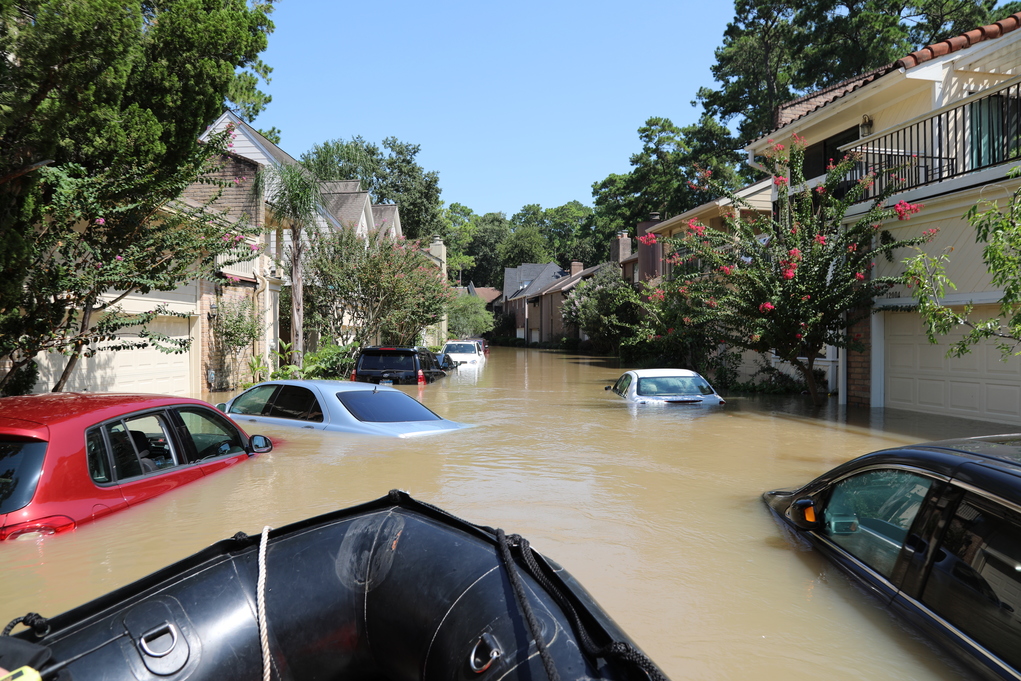A federal appellate court on Thursday cleared the way for thousands of Houston-area property owners and their insurers to pursue claims for damages after the US Army Corps of Engineers emptied two reservoirs that were holding back floodwaters from Hurricane Harvey in 2017.
A panel of the Federal Circuit Court of Appeals reversed a US Court of Federal Claims ruling that dismissed 176 lawsuits filed by the owners of properties along Buffalo Bayou downstream of the Addicks and Barker Reservoirs.
Rand Nolen, the lead attorney for the plaintiffs, said he doesn’t forsee any further procedural obstacles that would delay trial on property damage claims that he said are expected to cost $6.5 to $13 billion.
“Now the court has told the government it must pay the folks whose property it flooded, damaged, and destroyed,” Nolen, with the Fleming, Nolen and Jez law firm in Houston, said in a press release.
A similar lawsuit was filed by property owners upstream of the reservoirs. They allege the government did not buy enough land to adequately store floodwaters and used their properties for the extra storage.
Nolen said in an interview that the evidence shows the Corps intentionally emptied the reservoirs simply because an operating manual written in 1962 told them to do so. He said the dams were fortified in the 1980s and 1990s; there was never any threat of structural damage.
“Literally, what they did when they opened those floodgates is they moved the water that was behind the reservoirs into everybody’s living rooms,” he said.
Travelers Excess and Surplus Lines Co., American Home Assurance Co., Great Lakes Insurance and Lexington Insurance Co. are among the plaintiffs in the cases that were consolidated by the Federal Claims court. The insurers are seeking to subrogate property damage claims they paid because of the Buffalo Bayou flooding.
The plaintiffs say the government must compensate them for damages under the 5th Amendment, which prohibits the government from taking private property without just compensation. The lawsuits allege that the government took a “flowage easement” over their properties when it decided to release water from its dams.
Senior Judge Loren A. Smith, with the Federal Claims Court, granted a motion to dismiss filed by the government, finding that that the property owners did not have “a vested right in perfect flood control.” His ruling says the US Supreme Court has routinely held that the government cannot be held liable under the Fifth Amendment for property damage caused by events outside the government’s control, otherwise known as “acts of God.” Also, sovereign immunity protects the Corps because the release of water was made under the government’s “police power” to protect public safety, the trial court found.
But the Circuit Court panel rejected the judge’s reasoning. The opinion says Texas courts have tied the exercise of police power to solely to the abatement of nuisances, not the release of flood waters.
“A general police power exception to property rights does not exist under Texas law,” the opinion says. In fact, the Tucker Act, passed in 1887, specifically waives sovereign immunity for government flood-control projects, the appellate panel said.
“Texas courts have recognized that property owners have interests in flowage easements under Texas law…” the appellate panel’s opinion says.
The Circuit Court declined to rule on whether the Corps actually did engage in a “taking” under the Fifth Amendment. It remanded the case back to Judge Smith to determine if that occurred.
Nolen said he doesn’t have to prove that the Corps erred when it released water into Buffalo Bayou, but he has gathered evidence that shows there was no imminent danger to the dams. He said the Corps’ leadership decided to open the floodgates only because the Water Control Manual written in 1962 instructs them to do so when certain threshold conditions are met.
Presumably, the guidelines in the manual were intended to protect the structure of the dams, but nobody knows for sure, Nolen said. He said the operating manual was not amended after the dams were improved in two projects during the 1980s and 1990s.
Nolen said the Corps allowed water to flow out of the reservoirs at a rate of 16,000 cubic feet per second after Hurricane Harvey had passed. The Corps then kept the floodgates open for two weeks, increasing the amount fo damage.
He said water sat in the homes downstream from the reservoir at a depth of six to seven feet.
“Any salvaging of anything is impossible,” Nolen said. “Even the studs you cannot reuse because they bow and warp and start causing problems.”
Nolen said many of the 176 lawsuits filed so far against the Corps by downstream property owners seek compensation of about $2 billion for 1,875 properties. But he said an estimated total of 8,000 properties were affected. The six-year statute of limitations to file a damage claim has not yet passed. Nolen said he expects an additional 2,000 lawsuits to be filed, which will greatly increase the amount of damages owed.
US Court of Federal Claims Judge Charles Lettow ruled in favor of the upstream property owners in December 2019. A trial to determine the amount of damages in that litigation is now underway at the federal courthouse in Houston, Nolen said.
About the photo: Urban Search and Rescue Virginia Task Force Two (VA-TF2) searching neigborhoods inside Houston for survivors after flooding caused by Hurricane Harvey.
Was this article valuable?
Here are more articles you may enjoy.


 Jack Dorsey’s Block to Pay New York $40 Million in Cash App Settlement
Jack Dorsey’s Block to Pay New York $40 Million in Cash App Settlement  Europe’s Hottest Year Turbocharged Extreme Weather Across Region
Europe’s Hottest Year Turbocharged Extreme Weather Across Region  UAW Joins Critics Slamming RFK Jr.’s Cuts to Worker Safety Unit
UAW Joins Critics Slamming RFK Jr.’s Cuts to Worker Safety Unit  Google Faces UK Class Action From Businesses Over Online Search Dominance
Google Faces UK Class Action From Businesses Over Online Search Dominance 